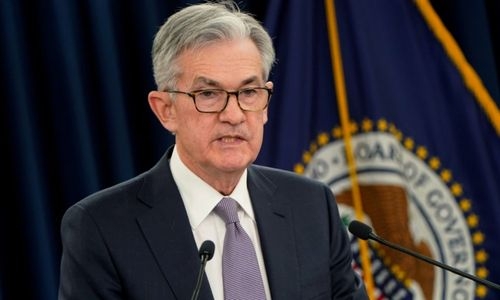CBB follows Fed, lifts key policy rates by 50 bps
TDT | Manama
The Daily Tribune – www.newsofbahrain.com
The Central Bank of Bahrain yesterday matched the US Federal Reserve in key policy rates with a late-night 0.5% hike, immediately after the Fed announced that it is raising rates by half a percentage points.
The Central Bank of Bahrain raised its key policy interest rate on the one-week deposit facility by 50 basis points from 4.75% to 5.25%.
The overnight deposit rate rose from 4.50% to 5.00%, the four-week deposit rate from 5.50% to 6.00% and the lending rates from 6.00% to 6.50%.
The top banker said the move is in light of the development of the international financial market and the continuous measures taken by the CBB to ensure the smooth functioning of the money markets in the Kingdom of Bahrain.
The CBB said it continues to monitor global and local market developments closely to take any further necessary actions to maintain monetary and financial stability in the Kingdom.
The GCC, which comprises six countries – Saudi Arabia, United Arab Emirates (UAE), Kuwait, Qatar, Oman and Bahrain – have their currency pegged to the USD since their respective creations in 1980–86.
Kuwait stands apart with a peg to a basket of currencies. Immediately after the US move, Qatar also hiked the repo rate by 50 basis points to 5.25 per cent.
Qatar’s central bank said it is raising its deposit, lending and repo rates by 50 basis points to 5%, 5.5% and 5.25%, respectively, effective Thursday, it said in a statement.
In its statement, the Federal Reserve has also projected at least an additional 75 basis points of increases in borrowing costs by the end of 2023, as well as a rise in unemployment and a near stalling of economic growth.
The US central bank’s projection of the target federal funds rate rising to 5.1% in 2023 is slightly higher than investors expected heading into this week’s two-day policy meeting and appeared biased if anything to move higher.
Only two of 19 Fed officials saw the benchmark overnight interest rate staying below 5% next year, a signal they still feel the need to lean into their battle against inflation that has been running at 40-year highs.
“The (Federal Open Market) Committee is highly attentive to inflation risks ... Ongoing increases in the target range will be appropriate in order to attain a stance of monetary policy that is sufficiently restrictive to return inflation to 2% over time,” the Fed said in a statement nearly identical to the one it issued at its November meeting.
The new statement, approved unanimously, was released after a meeting at which officials scaled back from the three-quarters-of-a-percentage-point rate increases delivered at the last four gatherings.
The Fed’s policy rate, which began the year at a near-zero level, is now in a target range of 4.25% to 4.50%, the highest since late 2007.
US stocks turned negative following the release of the policy statement.
In the US Treasury market, which plays a key role in the transmission of Fed policy decisions into the real economy, yields on the 2-year and 10-year notes rose.
The dollar edged higher against a basket of currencies.
The new federal funds rate outlook, a rough estimate of where central bank officials feel they can pause their current hiking cycle, was issued along with economic projections showing an extended battle with inflation still to come, and with near recessionary conditions developing over the year.
Inflation, based on the Fed’s preferred measure, is seen remaining above the central bank’s 2% target at least until the end of 2025, and will still be above 3% by the end of next year.
The median projected unemployment rate is seen rising to 4.6% over the next year from the current 3.7%, an increase that exceeds the level historically associated with a recession.
Gross domestic product is seen growing by just 0.5% next year, the same as estimated for 2022, before rising to 1.6% in 2024 and 1.8% in 2025, a level considered to be the economy’s long-run potential.
Related Posts

